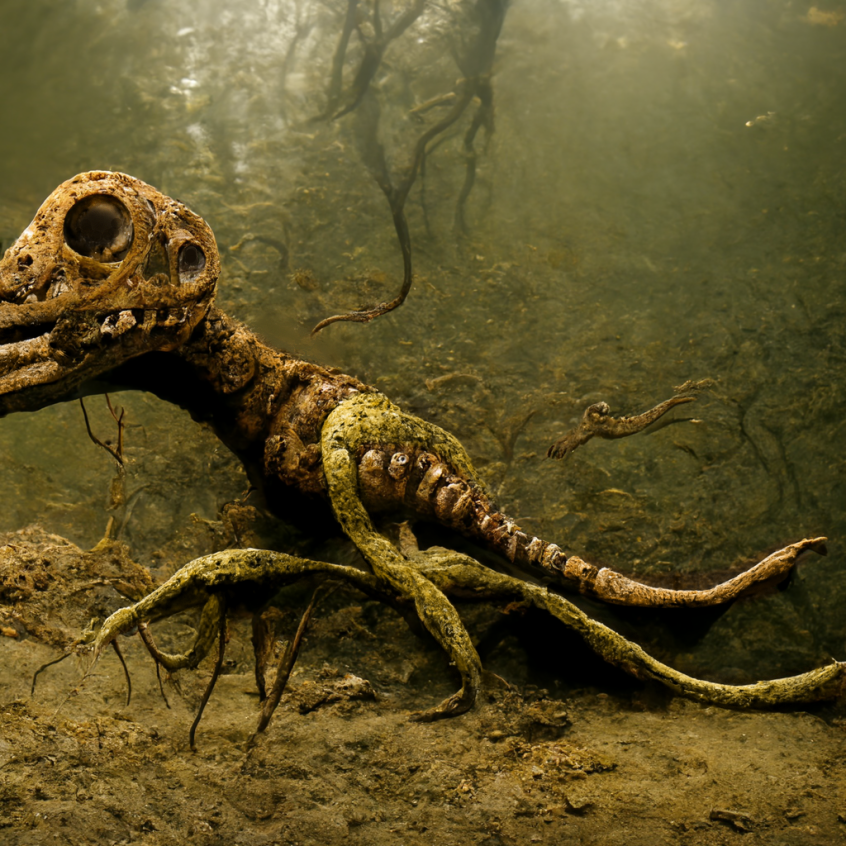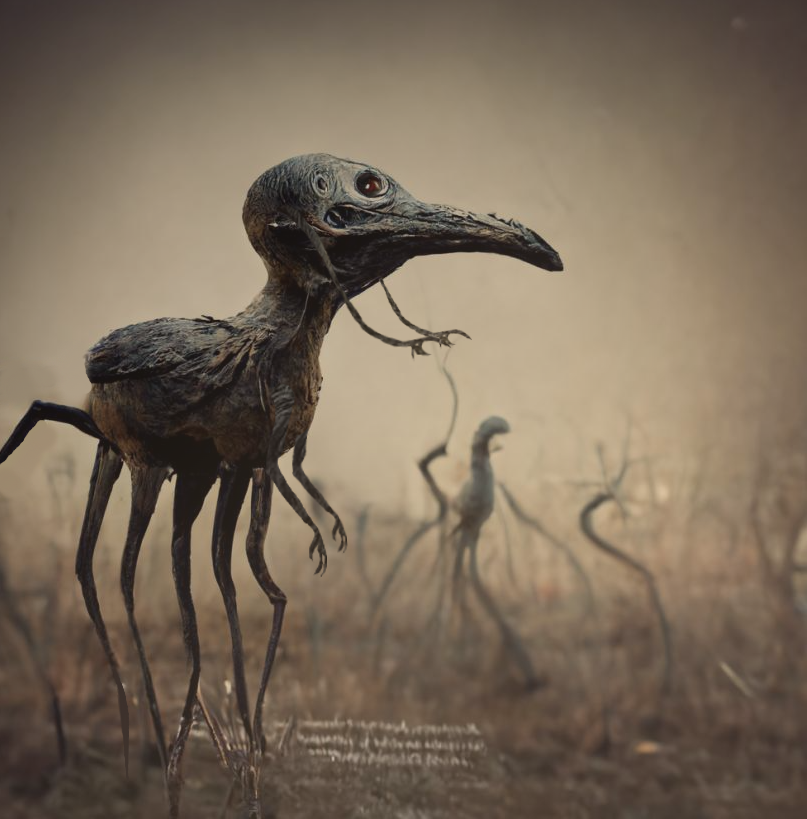
The star system TRAPPIST-1 is home to an unusually high number of life-supporting planets – 7 in total. Curiously, all complex terrestrial life found in the entire star system traces its descent from one common ancestor – Specimen 11b2. Researchers remain puzzled how this seemingly primitive omnivore was able to populate all seven of the planets. Various hypotheses have been forwarded, from the more grounded such as the species were seeded onto the planets by early advanced spacefaring culture to the more absurd such as it actually was a sapient race once that regressed by its own accord or by an intervention of a hostile alien civilization.

Regardless, the fact we even know of this remarkable creature is due to the works of Tweedum archaeon-priests. The Tweedum, of course, are intelligent descendants of Specimen 11b2, who have curved their own impressive empire in the Aquarius constellation. Their reconstruction of it shows an animal with 3 pairs of eyes derived from a patch of censor, 4 tentacle-like mouths used to grab and eat food, and antennae-like arms on its head mainly to feel but also to grab small light things. For locomotion, it used its other 8 limbs.
Though the exact cause remains unknown, around 100 million years ago, the Specimen 11b2 lineage underwent an explosive rate of diversification. Within a geologically short span of a few million years, the simple ecosystem of the past would completely disappear to give rise to a world ruled by highly specialized animals, including those achieving near-sapience. However, intelligence alone does not guarantee survival; various species would emerge to grow a consciousness of the self and the wider world only to die utterly forgotten; their civilization, achievements, knowledge, and arts lost to time forever. Only one would eventually come to break this cycle; its future descendants passing the great filter and make a leap into the cosmos. It would be the Tweedee. Largely unremarkable when it lived, a variety of adaptations allowed for it to succeed where others failed. A primitive tentacle-like mouth gave way to a more advanced beak structure, allowing the omnivore to add more items into his diet such as nuts and bone marrow, both sources rich in calories. The new species was more upright with its front legs evolving into ‘arms’ with opposable thumbs, acting as supplementary prehensile appendages to the already specialized antennae-like arms. Their lungs had also evolved to be more efficient, allowing them both to supply more oxygen to their brain and become endurance hunters that literally ran their prey to exhaustion and death.

The Tweedee would continue to further speciate, diversifying into various genera. Most over the passage of time would go extinct due to a cooling climate within their home planet. However, one would survive and give rise to the Tweedum, the first truly sapient lifeform from TRAPPIST-1. Compared to its ancient relative, the Tweedee stands more upright and its two pairs of arms both have opposable thumbs. Its specialized beak, too, like those of Earth ravens and parrots, can manipulate items to a certain degree. Its lower half is completely radial with it being very maneuverable.
The Tweedum’s brain is highly complex and its intelligence is said to far exceed that of humans and even the Bea’viskar. It is fortunate, therefore, for other civilizations that the Tweedum’s own is very young, with them only discovering fire while humanity was already colonizing Mars. With that said, the Tweedum seem to be rapidly closing the technological gap and at present seemed to have become the galactic workshop of the Orian Arm, providing especially the humans and Bea’wiskar with cheap but quality goods.
Though Tweedum’s culture is highly diverse, one trait most have in common is that eggs are treated like royalty with there being as many as 12 embryos in 1 egg. The females are also treated well for they carry these eggs but are almost exclusively not allowed to do any physical labor. Males are almost always in charge and, on average, stronger and taller. In Binaar, the most commonly spoken language in Tweedum’s civilization, the local name for their star system is Navagrahas.
This entry is a result of a collaboration between Rezonant Void, Artnoob100, and Dupers13.